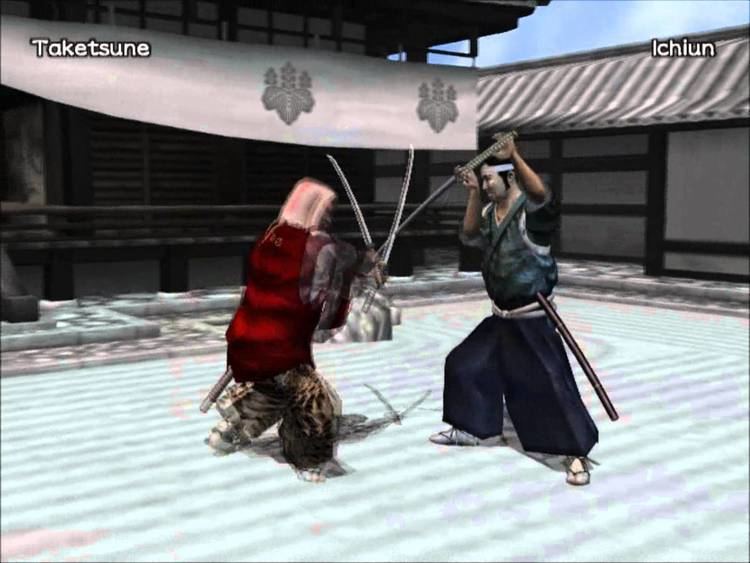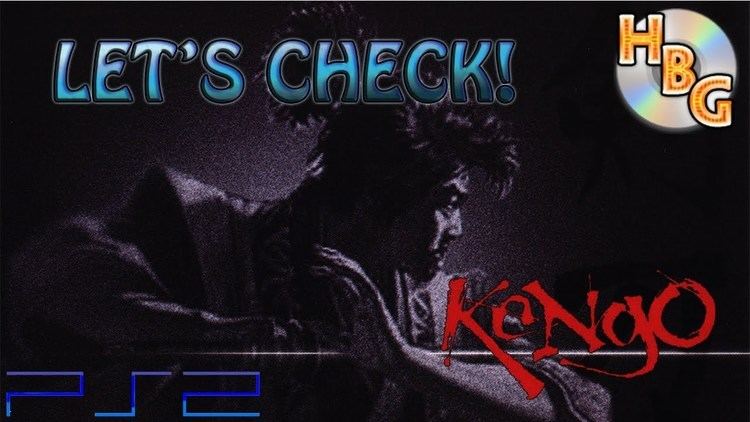6.2 /10 1 Votes6.2
6/10 IGN Genre Fighting game | 62% Metacritic 62% GameFAQs Initial release date 2 January 2001 | |||||||||||||||||||||||||||||||||
 | ||||||||||||||||||||||||||||||||||
Similar Genki games, Fighting games | ||||||||||||||||||||||||||||||||||
Kengo ii my favourite game from 2002
Kengo (剣豪) is the name of a series of video games developed by Genki. Kengo is considered a spiritual successor to the Bushido Blade game series for the PlayStation.
Contents
- Kengo ii my favourite game from 2002
- Games nobody played kengo legend of the 9
- Kengo Master of Bushido
- Reception
- Kengo 2 Legacy of the Blade
- Kengo 3
- Kengo Legend of the 9
- References

Games nobody played kengo legend of the 9
Kengo: Master of Bushido

Released for the PlayStation 2 as Kengo in Japan by Genki on December 14, 2000 and as Kengo: Master of Bushido in North America and Europe on January 3, 2001 and March 30, 2001 respectively by Crave Entertainment. It was universally panned as a "disappointment", mostly blasted in sharp comparison to the Bushido Blade titles.

While Kengo's graphics are sub-par for PlayStation 2, Kengo possesses some unique gameplay features. Although they evolved from Light Weight's previous Bushido Blade titles, their depth are the strongest factor of this title. There is only one button for attack and success is achieved through patience, timing, and skill.

The single player game is divided into three sections. The first two are training and challenging other schools. Training is divided into multiple mini-games that focus on one aspect of gaming, timing or button combos for example. The training serves to increase the maximum value of various character statistics, but not augment their actual value. The simple nature of the training quickly becomes repetitive. Challenging the other schools consists of fighting four identical-looking students, one unique student, and the school's master. The battles use wooden swords but are consecutive and of increasing difficulty, you regain a small amount of health between matches.

After defeating each rival school, you earn your own place as the head of a school. Randomly, you will have access to the Imperial Tournament, which is the final goal of the game. The tournament is fought with steel swords and you start each match with full health. You can still challenge other schools and victory earns you their school's sword. Equipping different swords gives you a unique "special move". At this point in the game you will be randomly challenged by either the master or unique student of other schools and cannot decline. Losing such random encounters strips your character of that school's sword.

There is no gameplay to speak of outside of battle or training. The interface is strictly menu based. Subtle features such as being able to "break" swords in training and having to wait for them to be repaired add to the game's realism. Both the life bar and the Ki bar (which allows special moves) can be hidden from battle to create a more intuitive player. The status of a wounded character is still displayed during battle.
Offense is composed of four "stances" and one special move. A special move may not always be available depending on what sword is equipped. A special move is executed by pressing triangle when the Ki bar is full. The Ki bar can be filled by pressing triangle or by fighting well. Each "stance" is selected with the shoulder buttons and is composed of three moves. The moves are always executed in sequence and can be augmented by character's proximity to one another, the analog stick, or pressing another button during the combo. Outside of battle, the four stances can be re-designed by replacing one or all of the three moves with other moves earned throughout the game.
Reception
The game received "mixed" reviews according to video game review aggregator Metacritic. In Japan, Famitsu gave it a score of 31 out of 40.
Kengo 2: Legacy of the Blade
The second game in the Kengo series was released for the PlayStation 2 in Japan on June 27, 2002. It was released in Europe on February 14, 2003 under the title Sword of the Samurai. It features a character creation feature and over 100 detailed swords to choose from. It was not released in North America.
In Japan, Famitsu gave the sequel 30 out of 40. The game received a 64% overall review score from Futuregamez.
Kengo 3
The third game in the Kengo series was released for the PlayStation 2 on September 22, 2004. Featuring much improved graphics and a simplified fighting system from Kengo 2. It was released only in Japan.
Kengo: Legend of the 9
Released for the Xbox 360 on September 7, 2006, Kengo: Legend of the 9 (Kengo: Zero in Japan and Europe) was developed by Genki and published by Majesco Entertainment. It is the fourth and latest game in the series.
In the game there are a total of 10 playable characters:
Reception
The game received "unfavorable" reviews according to video game review aggregator Metacritic.
